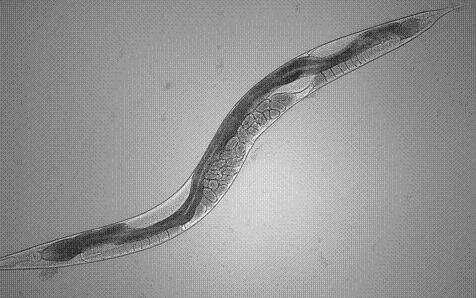
The prestigious scientific journal Developmental Cell published in its latest issue a work done in collaboration between the Technion researchers and the American Institute of Health researchers in which they deciphered for the first time the way and the mechanism by which fusion between cells takes place.
The ability of two cells to fuse into one large cell is essential for the initial creation of the embryo (fusion between sperm and egg) and for the development of body tissues such as the skeleton, muscles and placenta. In addition, fusion between cells is a crucial step in the infection of body cells by a virus. Recently, the importance of fusion processes in the development of stem cells and in preventing the development of cancerous tumors is becoming clear. Despite the great importance of this process, the genes involved remained unknown until recently. "To crack the mystery of fusion, we used a small worm called C. elegans as a research model," says Professor Benny Podbilevich from the Faculty of Biology at the Technion.
The winners of the Nobel Prize in Medicine for 2006, Dr. Andrew Peer and Dr. Craig Mello, are also doing their research on this worm. In 2002, Technion researchers, in collaboration with two American groups, found the eff-1 gene, which is essential for the fusion process. In 2004 they were able to prove that this gene is sufficient to induce fusion and can alone initiate the process. Now they have found the way he does it.
The fusion mechanism of the eff-1 was tested in collaboration with the group of researchers at the National Institute of Child Health and Human Development from the laboratory of Dr. Leonid Chernomordic who specializes in influenza virus research. Using insect cells growing in culture, the researchers succeeded for the first time to nurse cells outside the body - in a Petri dish. They achieved this by inserting the eff-1 gene of the worm C. elegans into the insect cells. In this way, the researchers proved that fusion between cells can be caused by the activity of the eff-1 protein without Need for other proteins. Later, we will examine whether the mechanism of cell fusion by eff-1 is similar to the fusion mechanism of viruses, even though they are different fusion proteins. "It became clear to us that the same mechanism works in both cases. The cell envelope has two layers - outer and inner," explains the professor Podbilevich. "Fusion takes place first in the outer layer, and then also in the inner layer. Then a two-way channel is formed, through which the content passes from cell to cell. However, there is also a difference between the mechanisms: while the fusion of a virus with a host cell is a one-way process in which the splicing gene is only found in the virus and is not present in the target cell, cell fusion by eff-1 is a two-way process and hence the need for the presence of eff-1 in both cells that fuse".
Understanding the fusion mechanism has many medical implications, among them the development of the ability to heal diseased tissues and organs by fusing with healthy stem cells, new ways to limit the development of a cancer tumor by preventing the fusion of the cancer cells, and perhaps also in the distant future deciphering the mechanism by which egg and sperm fuse, which which will be a solution to the problem of childless couples.
Other scientists who participated in this study are Yevgenia Laikina, Dr. Amir Sapir, Clary Valensi, Mittal Suisa and Dr. Gidi Shemer.
